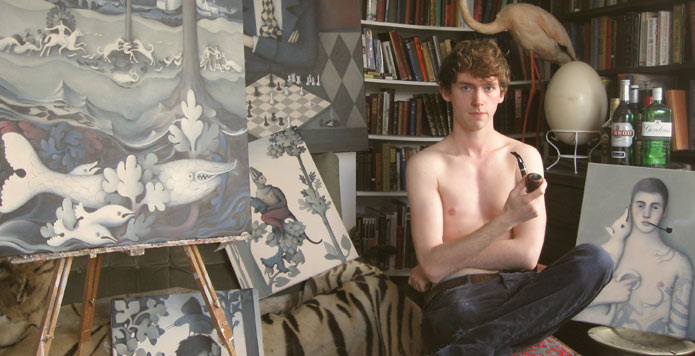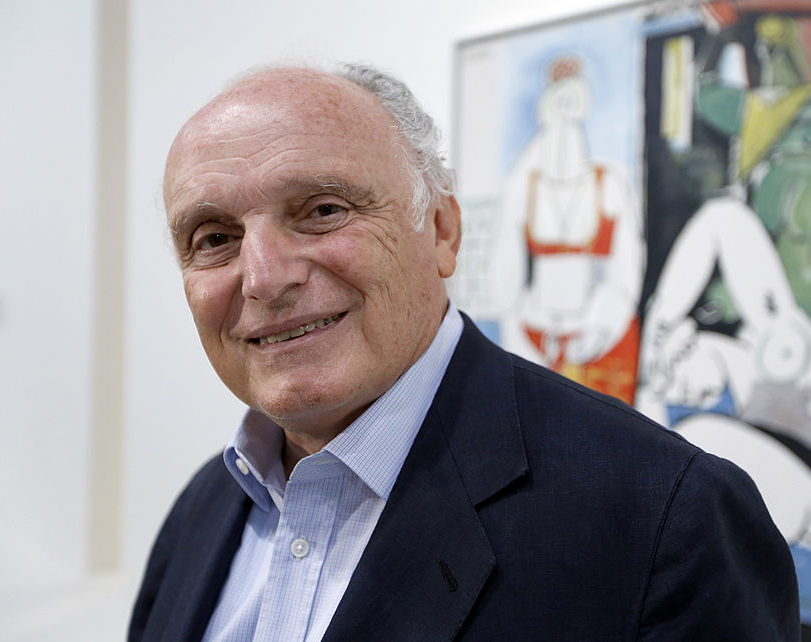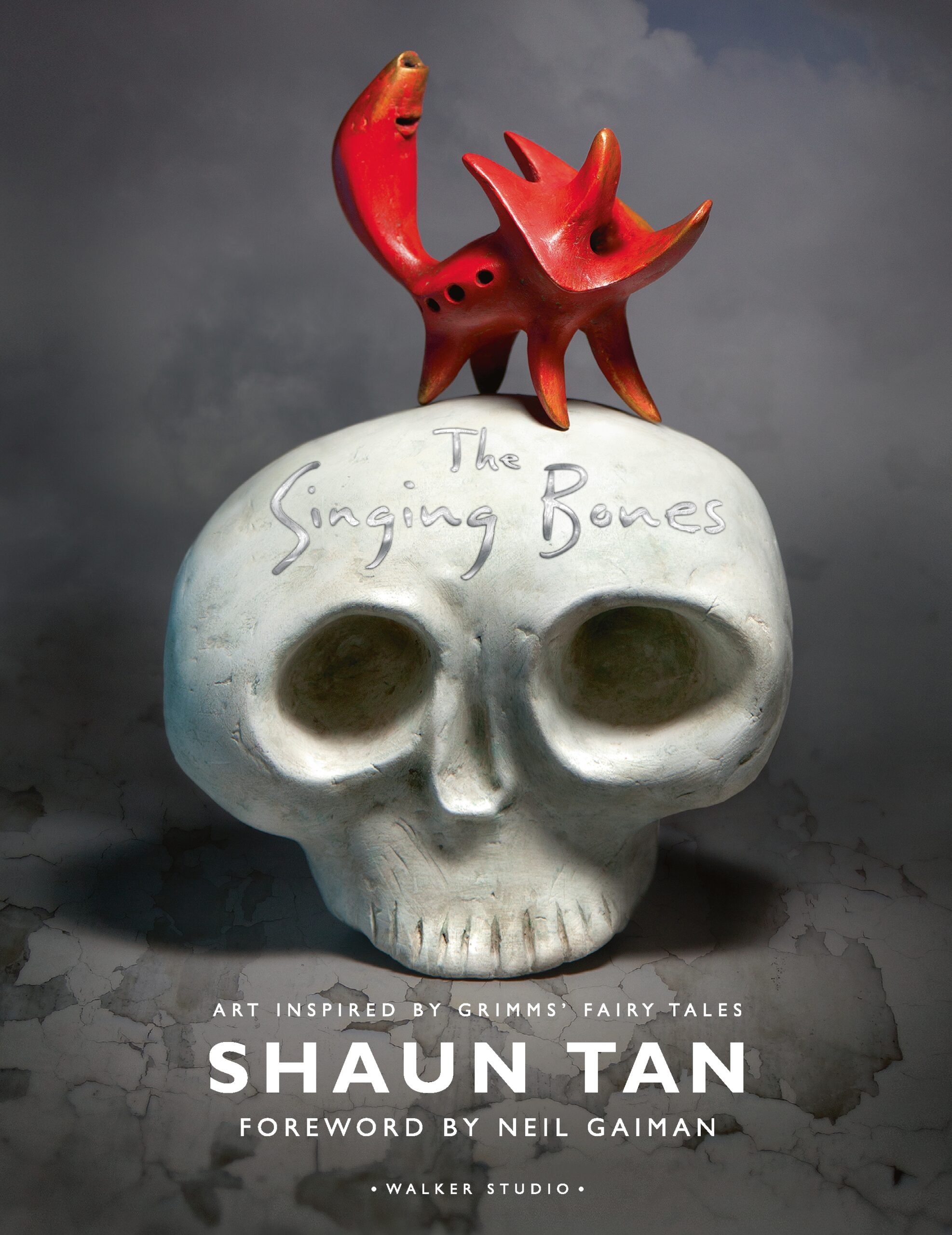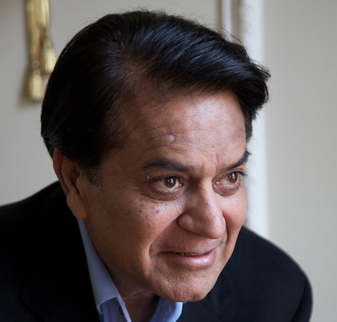
Michael Goedhuis is a London and New York based art dealer and a pioneer in the field of modern and contemporary Chinese art.
He started his career as an economist and investment banker but later took a degree in Art History under Anthony Blunt at the Courtauld Institute in London. He then joined Jacob Rothschild working with the Rothschild art investment companies. He was later instrumental in establishing the Oriental Department at Colnaghi. He is also known for discovering and selling the Vever Collection of paintings and manuscripts which had been lost since the 1930’s. A film, “The Vever Affair”, was made by the Smithsonian on this sale and on Goedhuis’s role in the discovery. In the past few years he has concentrated on promoting the field of Chinese contemporary ink painting.
TAC: You have a background in economics. How and why did you make the transition to art?
Michael Goedhuis: I started collecting from a very early age – mostly avant-garde works in America in the early 70’s – and made the move from finance via the Courtauld Institute of Art in order to formalise my interest in art. Art for me was a passion before business.
I then approached Jacob Rothschild and asked him if I could have the job of running Colnaghi, a distinguished art dealership that he had acquired a few years earlier.
Instead, he offered me a position in his private office after a short interview at which he asked me if I was a self-starter. At the time, this was a relatively new notion and I had no idea what he meant but replied with a vigorous affirmative nonetheless. Shortly after I took the position, Rothschild asked me to join him on a trip to Basel where he was negotiating a deal with the Swiss Bank Corporation. On the return journey he asked me how much money I’d made. I tried to impress him with my mental arithmetic by dividing my yearly salary by 365 and multiplying it by the number of days I’d worked for him. His cool rejoinder was, ‘No, how much money have you made ME?’.
We were later to work together for eight years building Colnaghi Oriental.
TAC: It is said the art is the last vast unregulated market in the world. Was this a motivation for switching from banking to art?
Michael Goedhuis: Indeed it is unregulated but this had nothing to do with my motivation which was that the art world is fascinating and fun.
TAC: Please, comment on the often stated criticism that too many contemporary Chinese artists move away from their cultural heritage by trying to adapt their style to pleasing Western collectors. Is Chinese culture being diluted through Western cultural influences?
Michael Goedhuis: This is a valid point. Some of the most famous Chinese contemporary artists are guilty of trying to appeal to a Western audience by introducing political themes of a subversive nature into their works. With some exceptions however this group of oil paintings – now so expensive – is not the most interesting in China.
In fact the most inventive and audacious artists in China today are the contemporary INK PAINTERS who are committed to creating a new pictorial language which is relevant and meaningful to society today while at the same time drawing inspiration from the past.
TAC: Has Chinese contemporary art peaked in terms of investment?
Michael Goedhuis: No, I doubt it. Authentic Chinese art, whether ancient or modern, will almost certainly rise in value in the future given the multiplication factor of wealth in China. To give you an example, I bought a painting by Zhang Xiaogang in 2003 for $100,000 which sold in 2010 for $6 million and will, in my view, be worth $25 million within 5 years.
TAC: Can you comment on other emerging art markets both from an investment prospective and from an aesthetic point of view?
Michael Goedhuis: There is no other emerging art market that is as strong or internationally relevant as the contemporary Chinese art market – not the Middle East, not India nor Pakistan or Indonesia. Indian contemporary art, its closest rival, can’t be compared to Chinese contemporary art… it remains parochial and ethnic in contrast to the cosmopolitan resonance of China.
TAC: I note that you advise Chinese clients on acquiring Chinese art. Is it an advantage or a disadvantage for a Western person to advise Chinese clients on Chinese art?
Michael Goedhuis: It is true that the Chinese prefer to deal with Chinese, but expertise for the time being remains in the West. So generally speaking, being a Western art dealer is an advantage and major collectors understand and appreciate this. The Chinese are fast learners, though, and the situation is changing.
TAC: Some Chinese artists have bypassed intermediaries and sold directly to the auction houses. Can you comment on the advantages and disadvantages of this?
Michael Goedhuis: The art market is still immature and haphazard in China although this also is changing fast. There is still a temptation for artists to deal directly with collectors and auction houses which has postponed the advantages to them of a structured, formal gallery system, but it will be soon recognized that galleries have many uses for them, not least protecting their price levels at auction.
TAC: Please define art in contemporary terms?
Michael Goedhuis: Art is the expression of what is happening in the world today and has a direct social relevance. We may think that much contemporary work today is tawdry, facile, crude and vulgar but this profile is precisely what the artist is trying to reflect from his interpretation of life today.






 Saving...
Saving...
3 Comments
Add Yours[…] Michael Goedhuis on Contemporary Chinese Art : The Art Collector The Global Collectors' Resource (http://t.co/Lg1W6YF Michael Goedhuis on Contemporary Chinese art! Source: http://www.theartcollector.org […]
It will be very appreciate if you have time to see my art works at this website.
[…] See on http://www.theartcollector.org […]